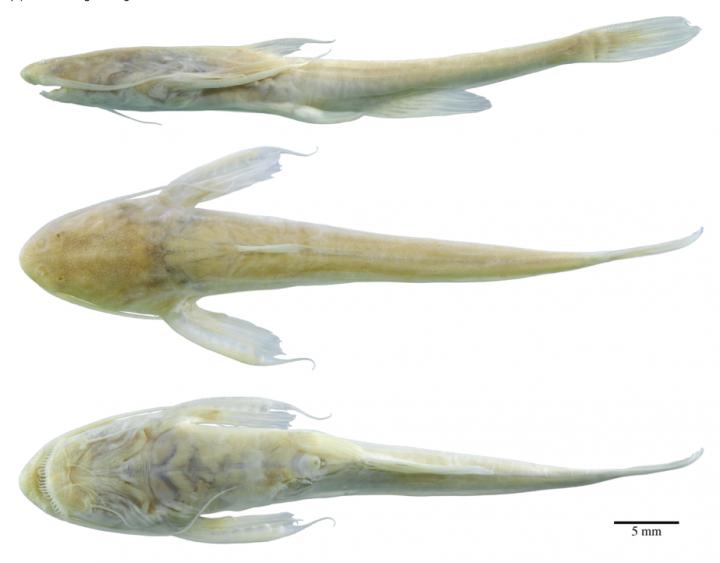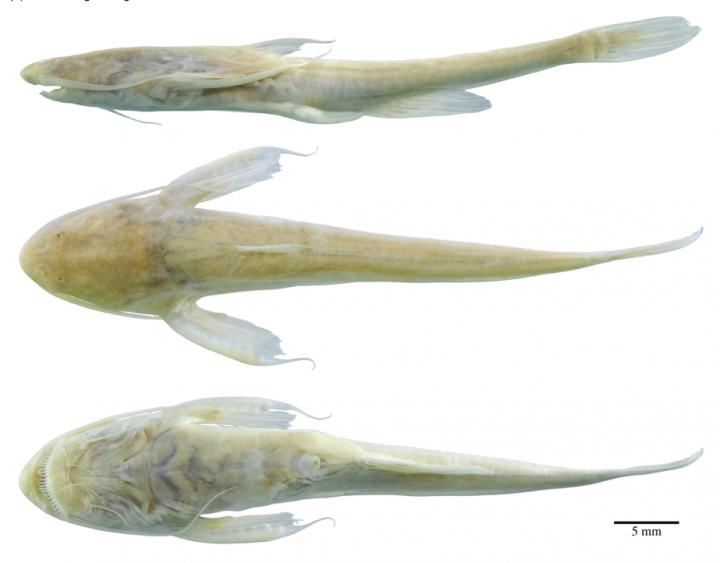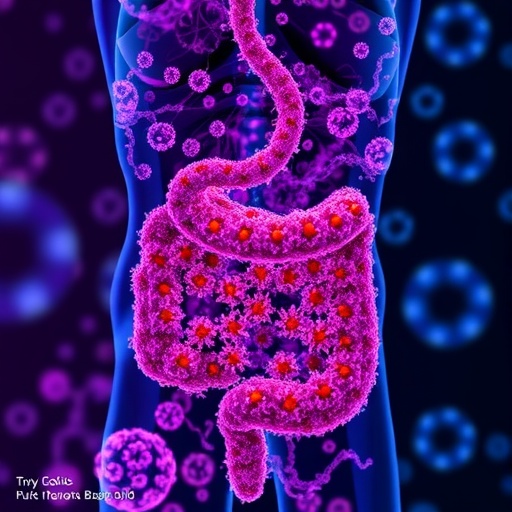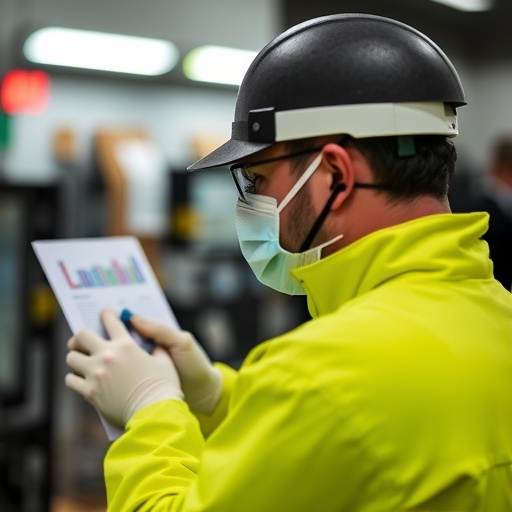
Credit: Courtesy of Mark Sabaj/Academy of Natural Sciences of Drexel University.
You've just discovered a unique, eyeless catfish from the murky bottoms of the Amazon River. What do you do?
If you're Mark Sabaj of the Academy of Natural Sciences of Drexel University, you name the new fish after your adventuresome daughter, of course.
"I named it Xyliphius sofiae as an expression of love for my daughter and appreciation for everything she has taught me," said Sabaj, PhD, interim curator of Ichthyology at the Academy. "Like Sofia, this specimen is unique."
For the past two years, since she was 5, Sofia has joined her father on fieldwork, which he said is his "favorite part of the job."
"Naturally, I want to bring my daughter on trips to the field," Sabaj explained. "The best part is the shared thrill of discovery as we pull our net out of the water."
That's just how the X. sofiae specimen was obtained. Sofia was yet to be born when the specimen was initially pulled from the middle of the Amazon River near Iquitos, Peru by Sabaj and local fishermen.. The fish was officially described in a paper published in Copeia, authored by Tiago Carvalho, then of the Academy, and co-authored by Sabaj and Carvalho's advisor, Roberto Reis of the Pontifical Catholic University of Rio Grande do Sul in Brazil.
Just over 44 millimeters from the tip of its snout to the base of its tail, the X. sofiae is relatively small for Xyliphius, a genus of banjo catfish native to South America.
"It has two characteristics that are relatively rare among catfishes: The complete loss of its eyes and its pale — almost extreme lack of — pigmentation," Sabaj said. "Most catfishes with similar features inhabit underground aquifers and other cave environments."
The habitat of X. sofiae does bare some similarities to dark waters below ground, though.
"The Amazon River carries a lot of sediments from the Andes Mountains to the Atlantic Ocean, so light does not penetrate far below its surface," Sabaj explained.
Xyliphius sofiae is extremely well-adapted to such dark environments. Being blind isn't an issue at such murky depths in part because the catfish has long barbels (whiskers) and fin filaments that likely allow it to feel its way around.
Although it's unclear what the fish eats, the best guess is that it sifts around the bottom of rivers for micro-invertebrates.
All of this points to the X. sofiae being at the pinnacle of evolution for banjo catfishes in a lightless aquatic environment.
"Perhaps most the most interesting aspect of the X. sofiae is its habitat, the dark depths of the Amazon channel," Sabaj said. "Until recently, such habitats remained poorly explored and the diversity of its denizens was poorly documented."
The fish named for Sofia now resides at the Academy in Philadelphia, the only known museum specimen in the world. If things keep up, Sofia may continue to follow in her father's footsteps and add more specimens to the Academy's vaunted collections.
Sofia's excitement for fieldwork isn't her only chip off the old block, it turns out. Having species named for them is in the family blood. In total, Sabaj has five species, including three catfish, named after him, starting with the Peckoltia sabaji, a popular pleco named in 2003 by Jon Armbruster, a long-time friend from Auburn University who was Sabaj's office mate in gradute school.
"Taxonomists can name a new species almost anything they want, so I'm humbled to be recognized by my colleagues for my contributions to taxonomy," Sabaj said.
###
Media Contact
Frank Otto
[email protected]
215-571-4244
@DrexelNews
http://www.Drexel.edu/
############
Story Source: Materials provided by Scienmag





